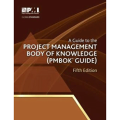
In an ideal world, a project’s scope would remain a fixed star—unchanging, predictable, and perfectly aligned with the original plan.
Yet, reality paints a messier picture: with countless moving parts, shifting priorities, and human variables at play, scope change is a near-inevitable force. Whether it’s the slow drip of unauthorized “scope creep” or the sanctioned adjustments that ripple through timelines and budgets, these shifts often strain client relationships and threaten project success.
The initial estimates—however carefully crafted—rarely match the final tally, leaving project managers to wrestle with a critical challenge: how do you tame this beast?
In this article we’ll explore practical, battle-tested strategies to keep your project on course. From crafting a rock-solid scope statement to mastering communication and monitoring external pressures, these five pillars will empower you to hold the line against chaos and deliver with confidence:
- Write a Good Scope Statement
- Define Requirements
- Maintain Strong Communication
- Create Good Estimates
- Monitor External Influences
Write a Good Scope Statement
The scope statement forms a boundary around the limits of the project. If it is poorly written, or insufficiently detailed, the project team will not know the boundaries of the project and will be prone to adding things that shouldn’t be there. They might also misinterpret the strategy used by the project to achieve its objectives.
Communication is key, hence there is no substitute for a good scope statement.
Define Requirements
In some industries, like I.T., the project requirements are usually front and center with a Requirements Traceability Matrix being used to track the changing nature of the requirements throughout the project. In others the requirements are minor, but they are always an essential underlying ingredient that supports the scope statement. Regardless of the established norms, the project requirements need to be known to the project team to avoid scope creep.
For example, a requirement for a bridge construction project might be:
- To gain regulatory approval from the Fisheries Department.
Communicating this requirement regularly to the project team ensures that the necessary biologist reports, meetings, and so forth, will be planned for without requiring future costly scope changes.
Maintain Strong Communication
Scope creep tends to be inversely proportional to the amount of communication between the project manager, project team, and stakeholders. It is easy to add tasks to the project, advance an agenda, “gold plate” the product, etc. when the project manager is not regularly communicating the project requirements and expectations.
This is where meetings come in to play. Now don’t get me wrong, meetings have a cost and should not be scheduled because someone does not want to work. But the concept of regular, face to face meetings will never die. I believe that a regular meeting between project manager, project team, and stakeholders is essential to a healthy project that finishes on time and budget with all stakeholders satisfied.
It is also a foundation of project management to have regular status updates, complete with earned value reports, scope statement reviews, and so forth, and this coincides beautifully with project team meetings.
Create Good Estimates
In the normal tug of war of business, projects tend toward lower project costs at the beginning (to win work, etc.) but higher project costs during project execution (to provide the highest quality product, etc.).
This tug of war has resulted in many frustrations for project managers who must deal with the consequences of the resulting scope creep.
Although strong project management helps, there is no substitute for good project estimates. Low confidence within the estimating department means extra contingencies, potential delays, and higher risk of unexpected events. These can hurt the business case for the project and cause significant hardship to the project manager.
Make sure you’ve done everything you can to get project estimates right.
Monitor External Influences
Many projects have gone smoothly with impeccable project management, only to have an external influence throw a monkey wrench into the plans. An earthquake, for example, or a plane crashing into the office. Seriously, though, most external influences come from unexpected “friendly” sources, like budget reductions from the organization, or stakeholders who change their acceptance criteria.
Project management fundamentals require that a Risk Register be prepared during the project planning phase, which is a listing of the main risks to the project’s success.
The risk register can be analyzed and prioritized in whatever detail is appropriate for the project, but the principle is unmistakable. A project manager must be on regular lookout duty for possible external influences that can derail a project.
In my experience, project managers are not normally held accountable for circumstances outside of their control, in fact, giving early warning notice to stakeholders can even look good.
How to Manage Scope Change
In the undesirable event that a scope change is necessary, how do you go about defending it? I have negotiated some million dollar plus scope changes, and in this little bonus section I will give you the keys to making it a success for all parties.
The underlying foundation that needs to be established is the business case for the change. The stakeholders need to know that their money is getting something they need. The following checklist can be used to justify the scope change.
- Added value. The scope change adds value to the end product. Also, the scope change adds more value than its expenditure relative to the original project.
- Market needs. The market needs have changed, and they require a product or feature set that was not anticipated at the outset of the project.
- Return on Investment. An opportunity has been identified that results in a return on investment that wasn’t known about before.
- Impact on Schedule/Cost. The expenditure of additional funds will reduce a stakeholder’s future cost, or result in a quicker project completion.
- Product Liability or Risks. The organization is taking on additional risk that was not foreseen, or the reduction of a known liability is worth the cost.
Although eliminating project scope changes altogether is a noble goal that is not always easy to achieve, if actively managed, it can be within your grasp.
Good luck on your projects!











Leave a Reply